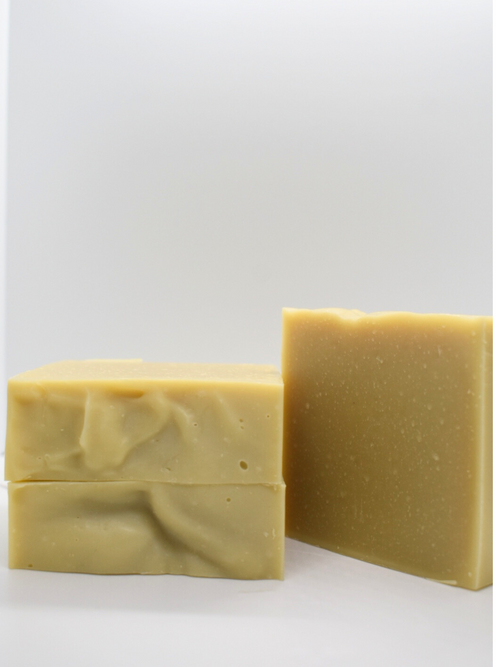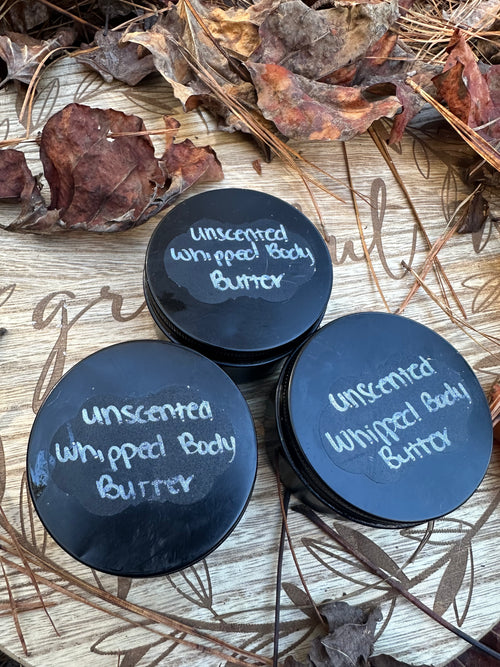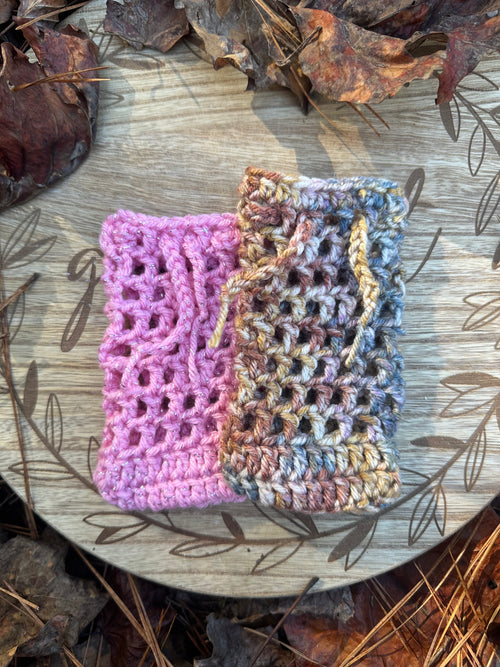When shopping for handmade soap, it’s easy to be drawn to the allure of cold process soaps. They promise luxury, nourishment, and a natural, skin-loving experience. But what if you discover that what you’re actually buying isn’t true cold process soap at all? Some soap makers use a shortcut called melt-and-pour soap, which may look and feel like cold process soap but is made using a completely different method. At Eternally Meraki, we’re dedicated to creating high-quality, true cold process soaps. In this article, we’ll help you spot the difference between melt-and-pour soaps and real cold process soaps, so you can make the best choice for your skin.
What is Melt and Pour Soap?
Melt and pour soap is exactly what it sounds like: soap that is bought in a pre-made base, melted down, and then poured into molds to set. This method skips the traditional process of mixing oils and lye (sodium hydroxide), and instead relies on a pre-made soap base that contains all the necessary ingredients for saponification. The base is typically a blend of glycerin, surfactants, oils, and other additives, and it can be customized with colors, fragrances, and additional ingredients like herbs or exfoliants.
While melt-and-pour soap can look beautiful and feels nice on the skin, it’s important to understand that it’s not a true soap-making process. Unlike cold process soap, which is made from scratch using oils, lye, and water, melt-and-pour soap skips the natural saponification process, which is what makes true cold process soap so rich and beneficial for the skin.
The Art of Cold Process Soap Making
Cold process soap is made by carefully combining oils (such as olive, coconut, or palm) with sodium hydroxide (lye) and water. This mixture undergoes a chemical reaction called saponification, which creates soap and glycerin, the latter being a natural humectant that draws moisture into your skin. The process takes time, as the soap must be poured into molds, allowed to harden, and then cured for 4-6 weeks. During the curing process, excess water evaporates, and the soap becomes firmer and milder.
True cold process soaps are rich in natural oils and butters, making them ideal for moisturizing and nourishing your skin. The saponification process also preserves the integrity of essential oils and botanicals, allowing for the full therapeutic benefits of these ingredients.
How to Spot the Difference: Melt and Pour vs. Cold Process Soap
Now that we know the basics of both soap-making methods, let’s explore how to tell the difference between melt-and-pour soap disguised as cold process soap and actual cold process soap. Here are some key indicators to help you make an informed choice.
Look at the Texture and Feel
Cold process soap has a unique, firm texture and a solid, slightly porous structure. It’s dense, but it also has a natural "give" to it because of the glycerin it contains. When you touch true cold process soap, it may feel slightly softer or smoother than melt-and-pour soap, which can have a more waxy or shiny finish.
Melt-and-pour soap, on the other hand, can feel overly smooth or even a bit slick, especially when it's new. This is because the soap is often made with added synthetic surfactants that give it a “slick” feel.
Examine the Ingredients
The ingredients list is one of the most telling signs of what’s in your soap. Cold process soaps made from scratch will list oils, lye, and water as the key ingredients, along with any additives like essential oils, exfoliants, or botanicals. If you see “sodium cocoate” or “glycerin” as the first ingredients, or if the soap doesn’t list lye, it’s likely a melt-and-pour base.
Check the Lather
True cold process soap creates a rich, creamy lather that feels nourishing and luxurious on the skin. The lather comes from the saponification process, where oils like coconut oil or castor oil naturally contribute to bubbles. This lather is soft, creamy, and hydrating.
Melt-and-pour soap can create a good lather, but it might not be as rich or moisturizing as cold process soap. The lather can also be a bit thinner and less luxurious due to the lack of natural glycerin and the presence of synthetic surfactants.
Consider the Curing Process
One of the hallmarks of cold process soap is the curing time. Cold process soap must cure for 4-6 weeks, which allows it to harden, become milder, and develop its full moisturizing properties. If the soap you’re looking at has been hardened in a matter of hours or days, it’s likely been made with a melt-and-pour base, which sets much more quickly and doesn’t require curing.
Why Choose Cold Process Soap?
True cold process soap, like the ones crafted at Eternally Meraki, offers superior skin benefits. The natural glycerin produced during the saponification process helps retain moisture, making it ideal for dry or sensitive skin. Cold process soap is also free from synthetic additives, making it a cleaner, more eco-friendly choice.
At Eternally Meraki, we use only the finest oils and natural ingredients to create our cold process soaps, ensuring that each bar is packed with skin-loving benefits. Whether you're choosing a soap with natural essential oils or a beautiful, intricate design, you can trust that our products are made with care, dedication, and the artistry of true soap-making.
Choose Wisely for Your Skin
When shopping for handmade soap, it’s important to know the difference between melt-and-pour soap and true cold process soap. While melt-and-pour soaps can be visually appealing and easy to use, they lack the depth and skin-loving benefits of cold process soaps. By understanding the key differences—texture, ingredients, lather, and curing time—you can confidently choose the best soap for your skin and enjoy the luxurious benefits of a truly handmade product.
At Eternally Meraki, we’re committed to providing the best in cold process soap. No shortcuts, no pre-made bases—just pure, natural ingredients crafted with care. Discover the difference for yourself today!


